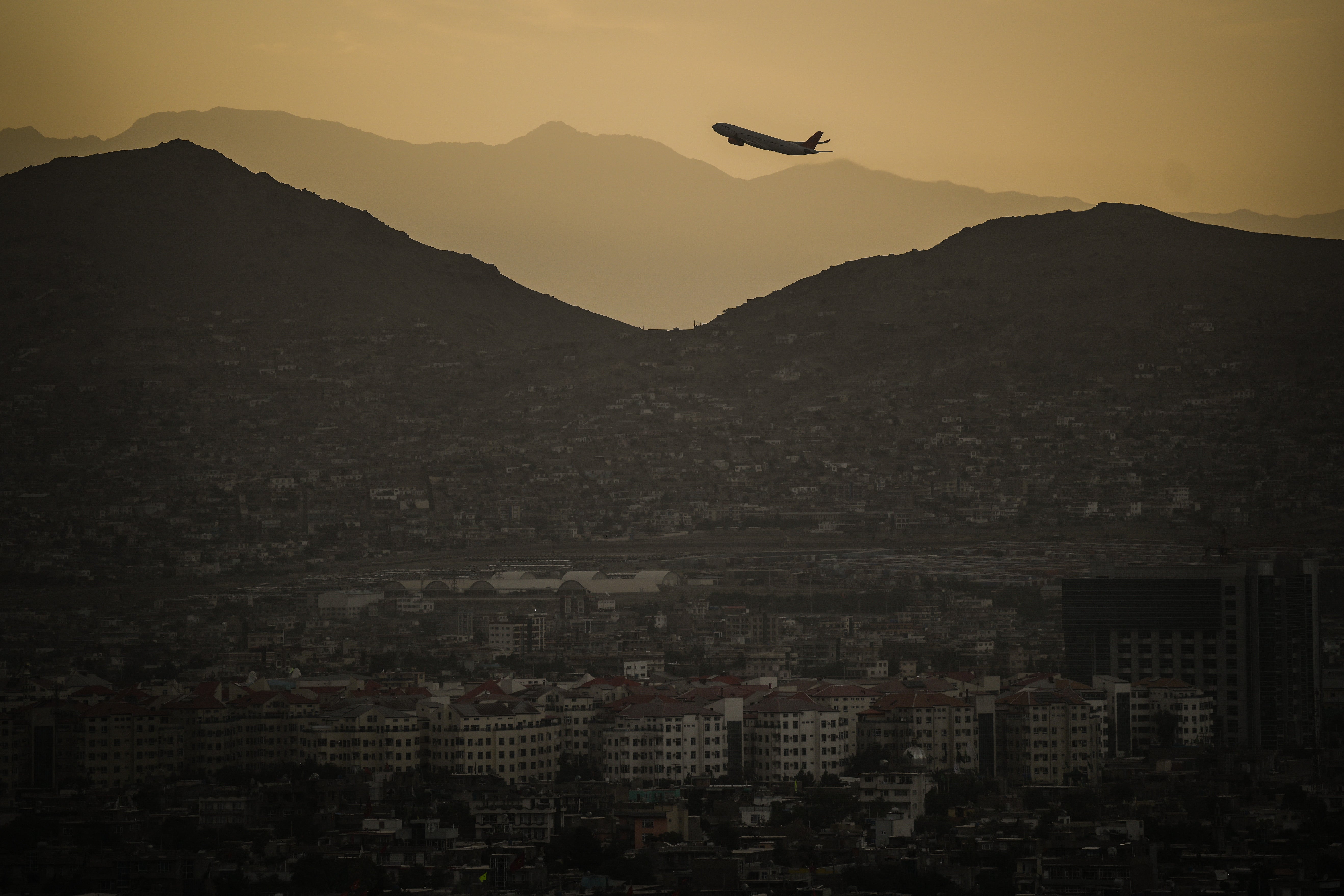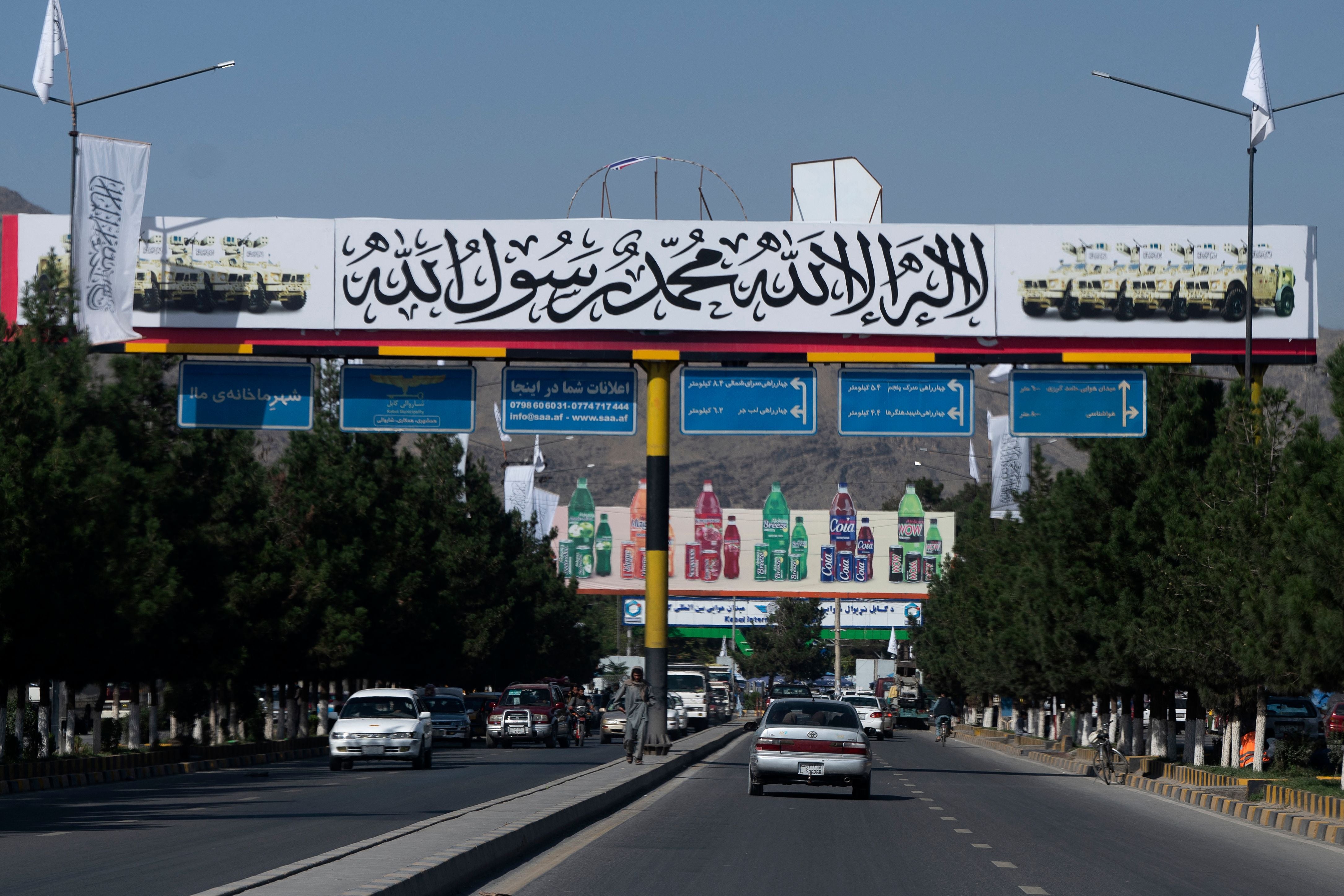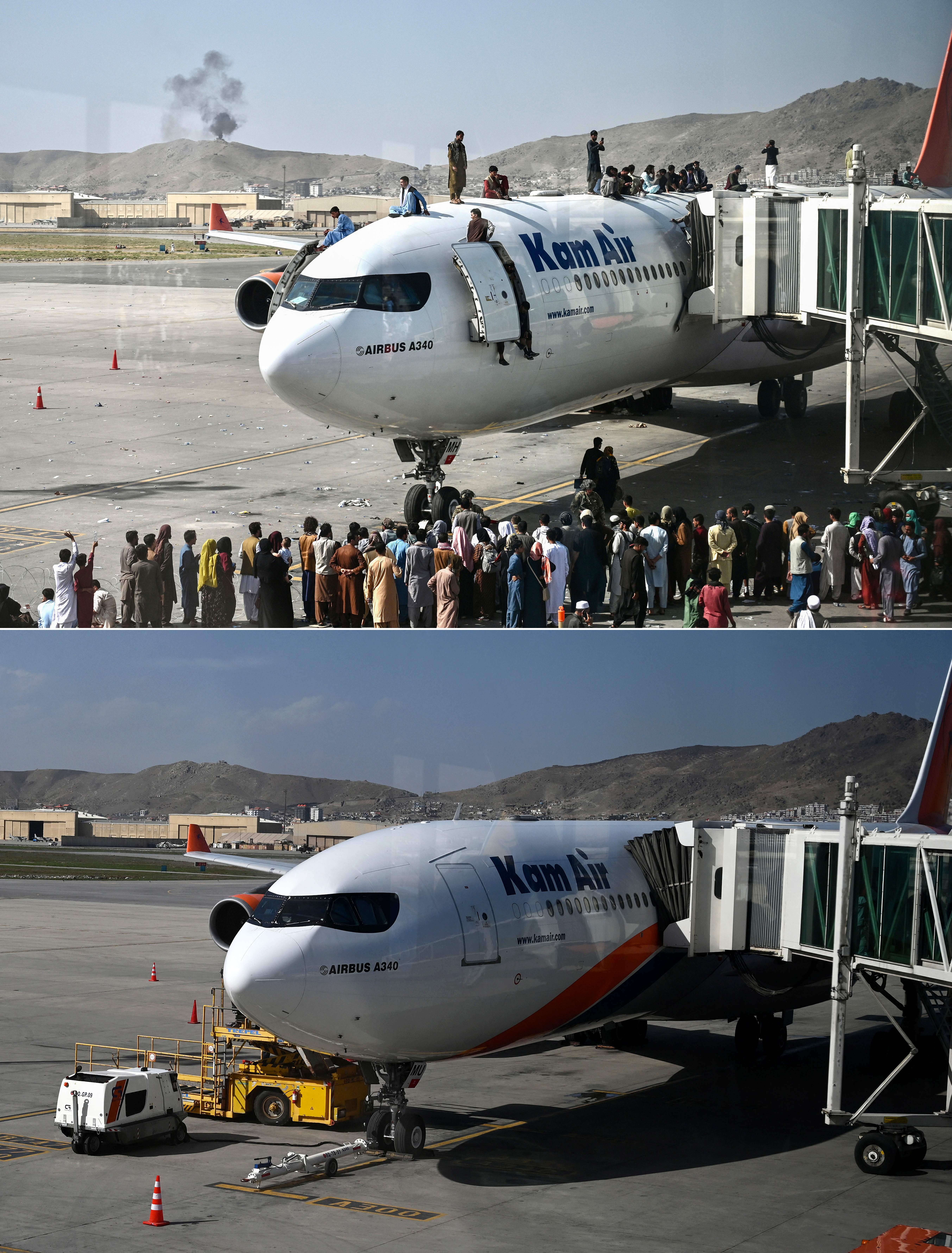More planes are returning to Afghan skies – making money for the Taliban in the process
Around 80-100 flights, including international airlines, are going in and out of Afghanistan’s airspace, each making about £593 for the hardline Islamic government, reports Arpan Rai


A little over a year after the fall of Afghanistan’s government that led to a chaotic and panic-driven mass exodus and closure of the country’s airspace, international flights have returned over Afghan skies, boosting revenue for the hardline Taliban government.
Around 80-100 flights, including international airlines from Europe and Asia, are now going in and out of Afghanistan’s airspace in a day, Imamuddin Ahmadi, spokesperson of the Taliban’s ministry of transportation and civil aviation, told The Independent.
And each flight using the airspace pays the Islamic government US $700 (£593).
Just on Thursday evening, two Dubai-bound flights crossed Afghanistan’s skies, among a total of 14 to use the country’s aerospace in a day.
They represent good news for Hibatullah Akhundzada, the supreme leader of Kabul and Taliban’s chief since 2016, who took over control from the US-led administration last year by force and returned to power by storming the presidential palace.
Last year, the streets of Kabul were flooded with people seeking desperate exits and the skies were silent after the mass exodus triggered destruction of the airports across the country.
Even six months ago, the Taliban-run administration was looking at a grim figure of less than 50 flights operating in its airspace in 24 hours. Now, most of the air traffic includes passenger flights.
“As you know, the airspace above Afghanistan is considered safe by others now. We are trying to facilitate more use of our airspace. There have been no threats for them [international players] so the usage of the airspace has increased,” the Taliban official said over a phone call from Kabul.
The gradual restoration of the air corridor across Afghanistan comes at a time when the Taliban have rolled out severe restrictions on the population.
The country’s women, who were previously barred from colleges and universities, have now been stopped from entering Kabul’s public parks. On Sunday, Akhundzada asked the judges in the country to impose punishments such as amputations and stoning as prescribed in the Sharia law.
Crimes such as robbery, kidnapping, and sedition will now be met with the Taliban’s interpretation of Islamic Sharia law, in a replica of its rule from the 1990s which it vowed to review after taking charge of Afghanistan last year.
Experts monitoring the skies globally do not consider the Afghanistan airspace to be safe.
“Flying within Afghanistan is not necessarily safe either; Afghan airlines have notoriously lax safety and security standards and none of the domestic companies, including Ariana, Safi, Pamir, and Kam Air, are allowed to operate in European Union airspace for this reason,” according to Crisis24, a global risk management company which has categorised the country’s airspace in the “critical” level of risk category.

Major cities such as Islamabad, Mazar-i-Sharif, Ankara, Jeddah, Dubai, Abu Dhabi, Herat, Mashhad and Istanbul remain among the top users of Afghanistan’s skies.
The country has predominantly two functional airlines operational — Kam Air and Ariana Afghan Airlines — which are driving most of the revenue for the battered regime.
Officials who served in the US-led Ashraf Ghani government before the fall of Kabul maintain that the restoration of the airspace did not rank high on the priority list for American and other western officials fleeing the country. But even a cent given to the aviation zone falling under the Taliban regime is a cent paid for the atrocities bordering on genocide.
“What these dozens of flights crossing that part of the world does is it offers a modest revenue to a regime that is running perhaps the worst authoritarian administration at the moment,” said Ahmad Shuja, who served as the director general of international relations and regional cooperation at the office of security council.
Up until 15 August 2021, Shuja stayed behind in capital Kabul and ensured that there was some order in place at the airport.
What should have been a methodical transition by the Nato and US officials in the hands of the incoming administration, became a chaotic humanitarian crisis.
“The airport was fine until the very end of the day on 15 August. It was somewhere between the evening of 15 August and the 16 August morning when the situation completely turned on its head,” he told The Independent.
“The airport security was not available and that is when the Taliban came over and the world saw the grim visuals of desperate people wanting to flee the country, even clinging to a moving plane to be taken away.”
As Taliban fighters slowly rolled into Kabul and subsequently into the airport to find half-demolished choppers left behind by the US soldiers, the building suffered fundamental damages. The terminal, the cubicles hosting departing and arriving passengers, the computers and other machinery were destroyed in the chaos.
But the critical blow to Afghanistan’s aviation sector was caused when the American contractors took away equipment such as fire suppressant engines and disabled scores of defence systems. The US military demilitarised 73 helicopters, disabled 70 MRAP armoured tactical vehicles and also the C-RAM air defence system which protected the Kabul airport.

“Even if the Afghan government managed to stay after 15 August, the ability of Kabul airport, Mazhar airport, Herat airport and Kandahar airport to serve as international terminals to cater to flights has been significantly diminished to even match the previous level of certification,” he said.
In the present-day situation, Shuja said these 80-100 flights are contributing financially to bring “stability and strength to the world’s worst authoritarian regime that is instituting gender apartheid, engaging in acts likely amounting to genocide against minorities, that is also prohibiting secondary education to girls, completely [restricting] the domestic press and executing former government soldiers and officials”.
Shuja, who was in charge of Afghanistan’s security cooperation with the wider world at the presidential palace, said: “The Taliban regime is now strapped for cash. It does not have money to pay the doctors, teachers and civil servants.”
And the money this regime will make from the aviation sector is not going to pay the salary of its civilian workers, he added. This money is directly going to strengthen and equip the Taliban apparatus, he said.
But Ahmadi said the outlook and expectations of the Afghan regime are looking up for now.

“In six months, we [Taliban administration] expect more than 300 flights to use our airspace. We will provide more facilities, Insha’Allah (god willing),” he said.






Join our commenting forum
Join thought-provoking conversations, follow other Independent readers and see their replies
0Comments